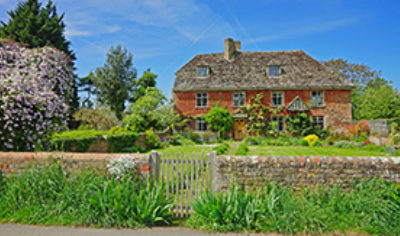Introduction – as mentioned in previous articles, the register of listed buildings exists in order to help identify and protect our cultural, social and architectural heritage. Local authorities play a big part in this process and have the power to take immediate steps if they are altered to a building in danger.
Listed Building Register – most buildings that are listed were selected in National Surveys, the latest of which was completed in 1987. This latest survey was very comprehensive but no system is in fallible and sometimes buildings are overlooked. Local authorities have the ability to spot list properties if a building appears to be at risk. This spot listing places a building preservation order on the property which in effect gives the building temporary listing status which lasts for up to six months. During this six months period, a decision has to be reached as to whether the building should be granted a full listed building status. During this period, no alterations or demolition can take place at the premises. Whilst spot listing is usually carried out by local authorities, anyone can apply to have a building listed, even their own. Listing building can be quite a contentious matter, particularly for developers about to start work on a property. There have been occasions when work has been started only to be halted as the council have been altered to reasons for the property to be spot listed.
Developers worried about this type of listing can apply for a certificate of immunity which is a document stating that the authority has no intention of seeking a listing for the property about to be developed. These certificates of immunity are usually issued for a period of five years. Applying for a certificate of immunity is not without it’s drawbacks, if the application fails, a local authority may choose t add a building to it’s lists. It is possible for buildings to be de-listed, applications must be made to the department of the environment who will be looking for evidence that the designated property lacks the credentials for a listed status.
Greenback – buildings that are listed appear in a special Department of Environment ‘Greenback’. These green covered reference books contain the lists of all the properties in a given district and offer a brief description of each listed building, arrange in order of address. Properties that have recently been added to the register have more information. Each sheet contains various information about the property. Expect to see the following:-
- National Grid reference number
- The date when the building was first listed
- The serial number of the listing
- The location of the property either by parish, Town or City
- The address of the property
- The grade listing
Recording Details of the Building – headings are also used although not all of them are completed for each property. The headings used in the building descriptive notes are as follows:-B- Building Type: original purpose and it’s present function D- Date or dates of different parts of the building to include alterations to the structure. A-The Architect/Craftsperson or Building Patron M- Material used P- Plan and style F-Facade I-interior S- Subsidary features such as outbuildings H- History of the building relevant to listing E- Any extra information that may be important S-Sources of the information provided.The register is kept to ensure that listed buildings are controlled, if any alterations to a property are carried out without listed building consent being obtained, the local authority will refer to the ‘Greenbacks’ to establish how far the structure deviates from the official notes.
For a Listed Building Insurance contact Assetsure.




























